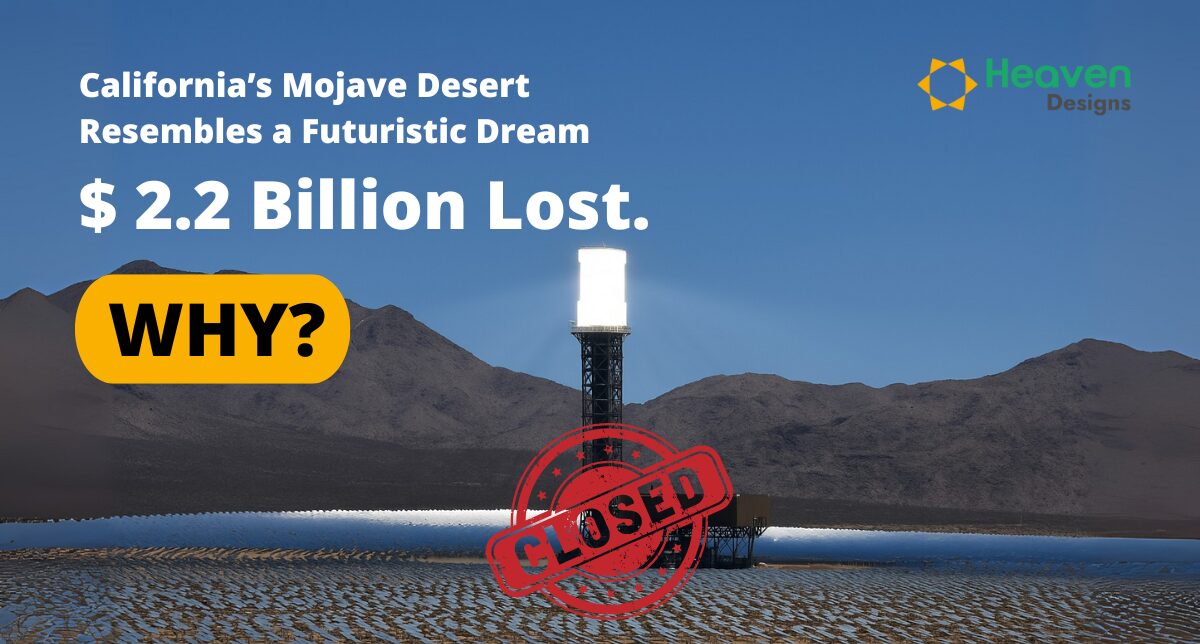Seen from the sky, the Ivanpah Solar Power Facility in California’s Mojave Desert looks like a futuristic marvel — three gleaming 459-foot towers, surrounded by 173,500 computer-controlled mirrors (heliostats) spread across five square miles of desert.
Construction began in 2010, backed by $1.6 billion in federal loan guarantees from the US Department of Energy, and by 2014 it stood as the world’s largest solar power plant. For a time, Ivanpah was celebrated as a bold symbol of America’s renewable energy leadership.
But behind the impressive visuals and big promises, the reality told another story. Despite costing $2.2 billion, Ivanpah consistently struggled to perform, relied heavily on natural gas, and became a cautionary tale of how fast-moving technology can outpace expensive, ambitious projects. Today, the plant is set to close in 2026, never having lived up to its early expectations.
What Went Wrong
Here are the key failures and miscalculations that plagued the project:
- Underperformance — The facility generated significantly less energy than projected.
- Design complexity & overreach — The concentrated solar thermal (CST) approach (towers + heliostats) proved more challenging and less reliable in practice.
- Dependence on backup energy (natural gas) — To maintain steam and operations under low solar conditions, it had to burn gas, undermining the “100% clean” narrative.
- Rapid cost dynamics — As photovoltaic (PV) technology costs collapsed globally, the CST route lost economic competitiveness.
- Environmental / wildlife impact — There are reports of bird fatalities (due to intense heat/concentrated rays) and ecosystem disruption in the desert habitat.
- Contract cancellations & financial strain — Power purchase agreements and other contracts were peeled back when the plant failed to deliver promised output.
These compounding issues turned what was once a bold vision into a cautionary tale in the solar industry.
Key Takeaways — What We Can Learn
From such an expensive and high-profile failure come critical lessons for solar developers, investors, and engineers:
- Validate design with field reality, not just models
- Avoid overengineering — simplicity often wins
- Ensure flexibility — backup independence & modularity
- Keep economic competitiveness in view — innovation must also be financially sustainable
- Respect ecological balance — clean energy must not come at the cost of biodiversity
- Transparency & expectations management — overpromising destroys trust
The $2.2 billion loss in California reminds us that the solar revolution requires more than ambition — it demands accuracy, responsibility, and practical execution.
At Heaven Designs, we are committed to ensuring that India’s solar growth story avoids such pitfalls and shines as a model of sustainability and reliability.


